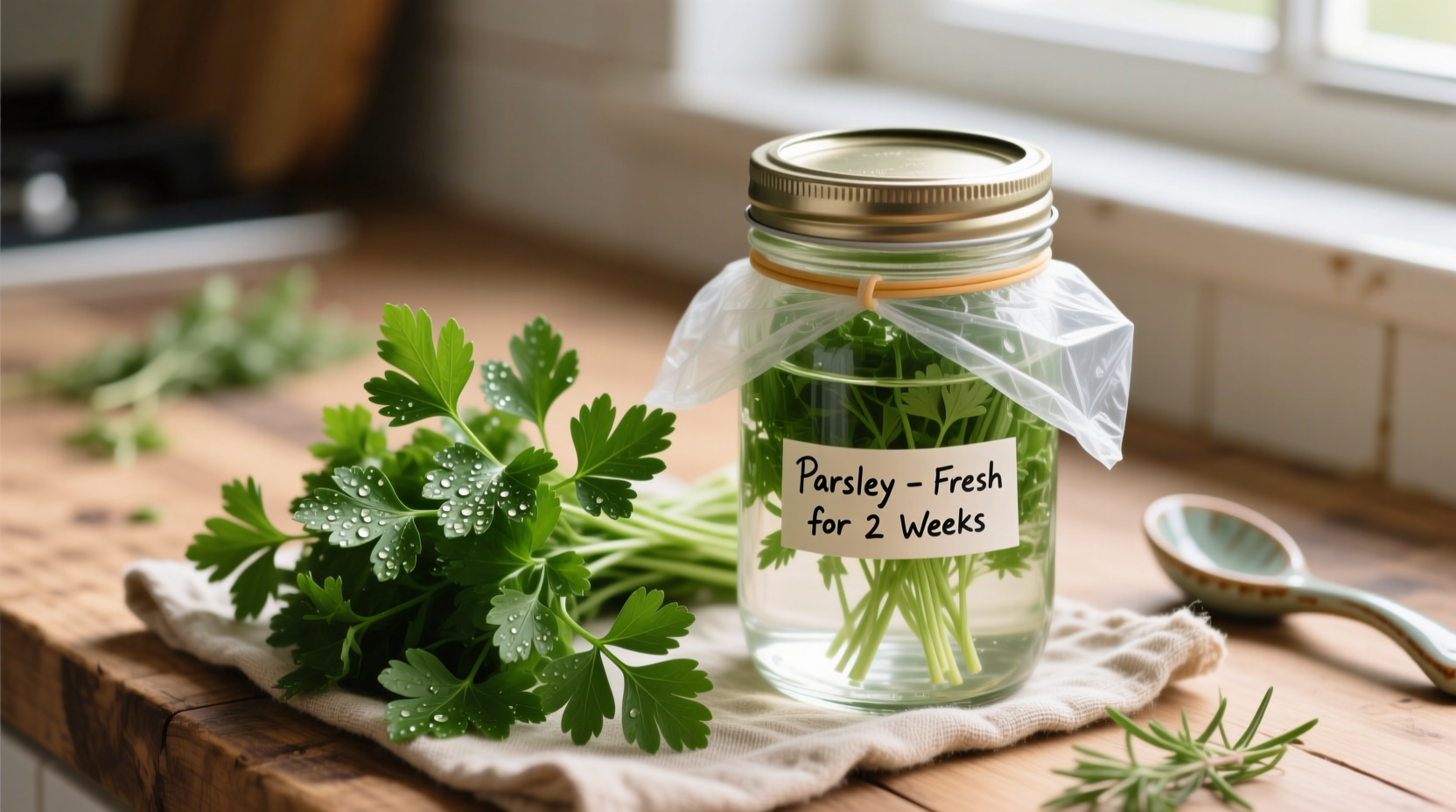Nothing beats the bright, fresh flavor of parsley in your dishes, but this delicate herb tends to wilt quickly. As someone who's worked with professional kitchens and home cooks for over 15 years, I've tested countless preservation methods to help you extend the life of your parsley while maintaining its flavor and texture. Whether you've bought a large bunch at the market or harvested from your garden, these science-backed techniques will prevent waste and ensure you always have fresh parsley ready for your recipes.
Why Proper Parsley Preservation Matters
Parsley isn't just a garnish—it's a flavor powerhouse that enhances everything from sauces to roasted vegetables. According to USDA food waste statistics, fresh herbs account for approximately 23% of household produce waste. By mastering preservation techniques, you'll save money, reduce waste, and always have this versatile herb available when inspiration strikes in the kitchen.
The Water Method: Refrigeration That Works
This professional kitchen technique transforms how long parsley stays fresh:
- Trim ¼ inch from the bottom of the stems
- Place upright in a glass with 1-2 inches of water
- Cover loosely with a plastic produce bag
- Store in the refrigerator's main compartment (not the door)
- Change water every 2-3 days
This method works because it mimics the herb's natural growing conditions while controlling humidity. The water provides hydration while the loose plastic cover maintains optimal 90-95% humidity levels—critical for leafy greens according to research from the University of California's Agriculture Department.

Freezing Techniques for Long-Term Storage
When you need to preserve parsley beyond refrigeration limits, freezing maintains flavor remarkably well:
Ice Cube Method (Best for Cooking)
Finely chop parsley, portion into ice cube tray sections, cover with olive oil or water, and freeze. Transfer cubes to airtight containers once solid. This method preserves flavor compounds for up to 6 months and provides ready-to-use portions for soups, stews, and sauces.
Whole Leaf Freezing (Best for Presentation)
Spread clean, dry leaves on a baking sheet, freeze until solid (about 2 hours), then transfer to vacuum-sealed bags. This maintains leaf structure for garnishing, though texture becomes slightly softer after thawing.
| Preservation Method | Shelf Life | Best For | Flavor Retention |
|---|---|---|---|
| Water Refrigeration | 10-14 days | Fresh applications | 95-100% |
| Oil Ice Cubes | 6 months | Cooking | 85-90% |
| Dried Parsley | 1-2 years | Seasoning blends | 60-70% |
| Whole Frozen | 4 months | Garnishing | 75-80% |
Drying Options for Traditional Preservation
Drying works well when you need shelf-stable parsley, though it loses some fresh flavor complexity:
Air Drying (No Equipment Needed)
Bundle stems together and hang upside down in a dark, well-ventilated area for 1-2 weeks. Store in airtight containers away from light. This traditional method preserves about 65% of the original flavor compounds according to Cornell University's food science research.
Oven Drying (Faster Results)
Spread leaves in a single layer on a baking sheet. Dry at the lowest oven setting (150-170°F) with the door slightly ajar for 2-4 hours until crisp. Cool completely before storing in glass jars.
Advanced Preservation Methods
For culinary enthusiasts looking to maximize flavor preservation:
Parsley-Infused Oils
Submerge clean parsley in high-quality olive oil in a sterilized jar. Refrigerate for up to 1 week (for fresh flavor) or freeze for longer storage. The oil captures volatile flavor compounds while protecting against oxidation.
Vinegar Preservation
Chop parsley and cover with white wine vinegar in a sealed container. Refrigerate for up to 3 weeks. This method works particularly well for salad dressings and marinades, adding both flavor and acidity.
Critical Mistakes That Ruin Parsley
Avoid these common errors that dramatically shorten parsley's shelf life:
- Washing before refrigeration - Excess moisture accelerates spoilage unless properly dried
- Using airtight containers without ventilation - Traps ethylene gas that speeds deterioration
- Storing near ethylene-producing fruits - Keep away from apples, bananas, and tomatoes
- Keeping in the original grocery store packaging - Typically doesn't provide proper humidity control
How to Test Preserved Parsley Quality
Before using preserved parsley, check these indicators:
- Color - Vibrant green indicates freshness; yellow or brown spots signal deterioration
- Texture - Crisp, firm leaves are best; slimy or mushy texture means it's past prime
- Scent - Fresh parsley has a clean, grassy aroma; musty or sour smells indicate spoilage
- Stem integrity - Firm stems maintain water transport; limp stems indicate dehydration
When in doubt, perform a small taste test. Properly preserved parsley should have a bright, clean flavor without bitterness or off-notes.











 浙公网安备
33010002000092号
浙公网安备
33010002000092号 浙B2-20120091-4
浙B2-20120091-4